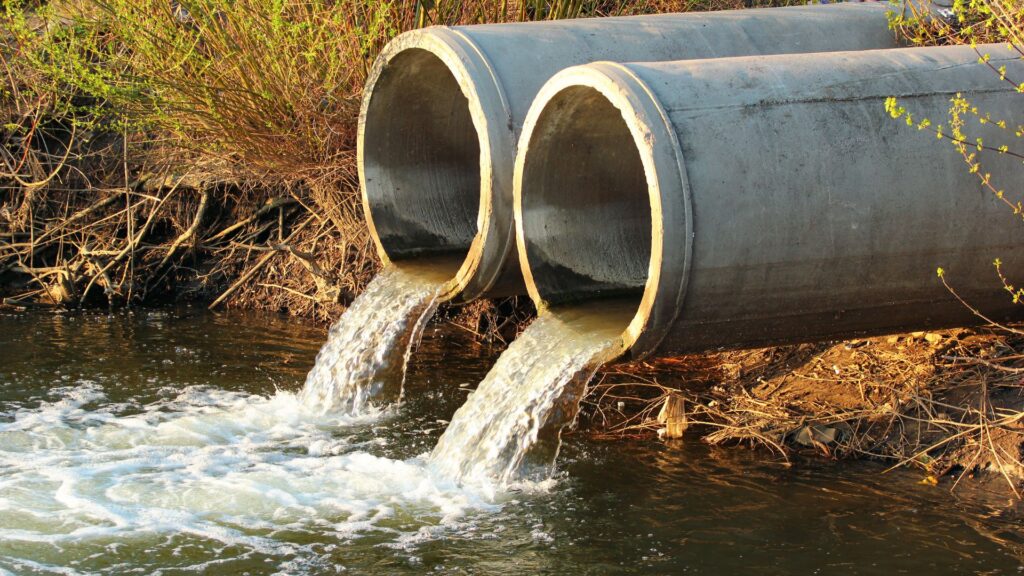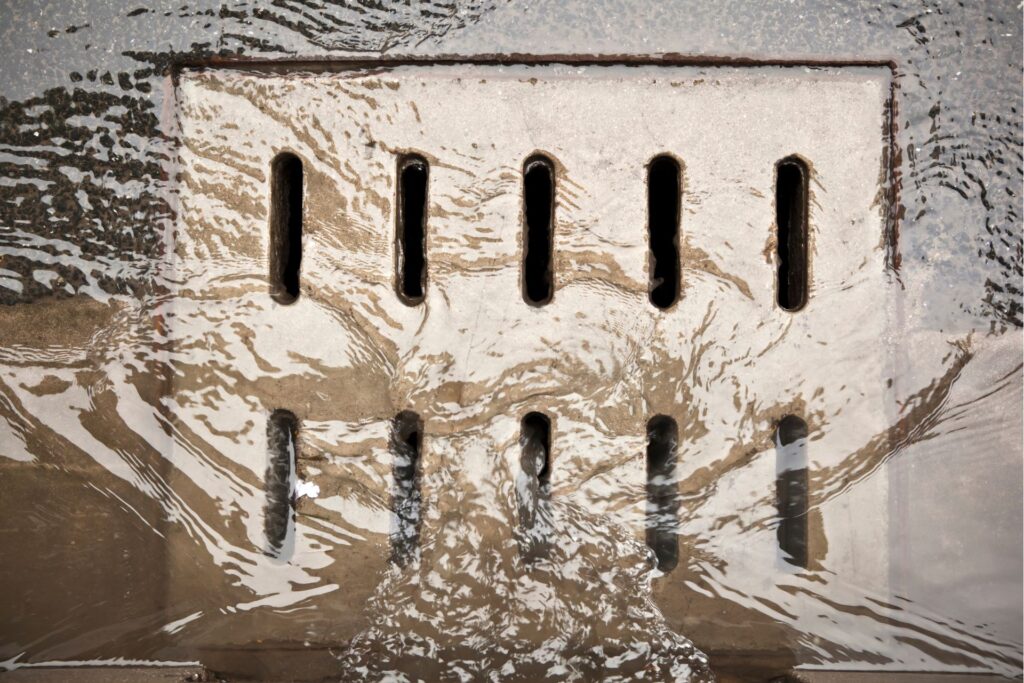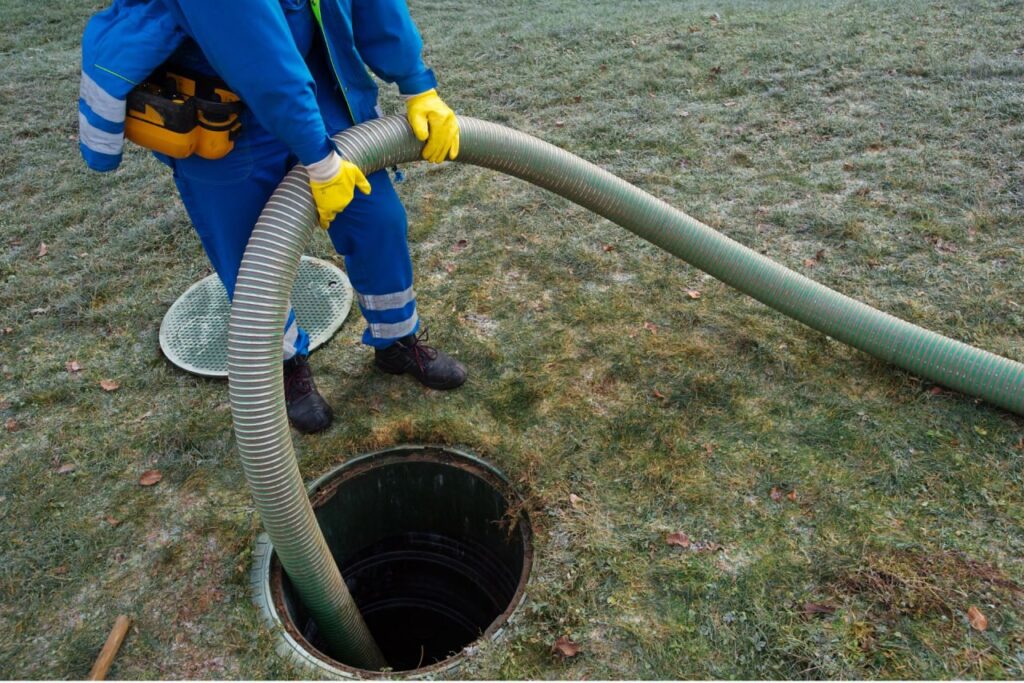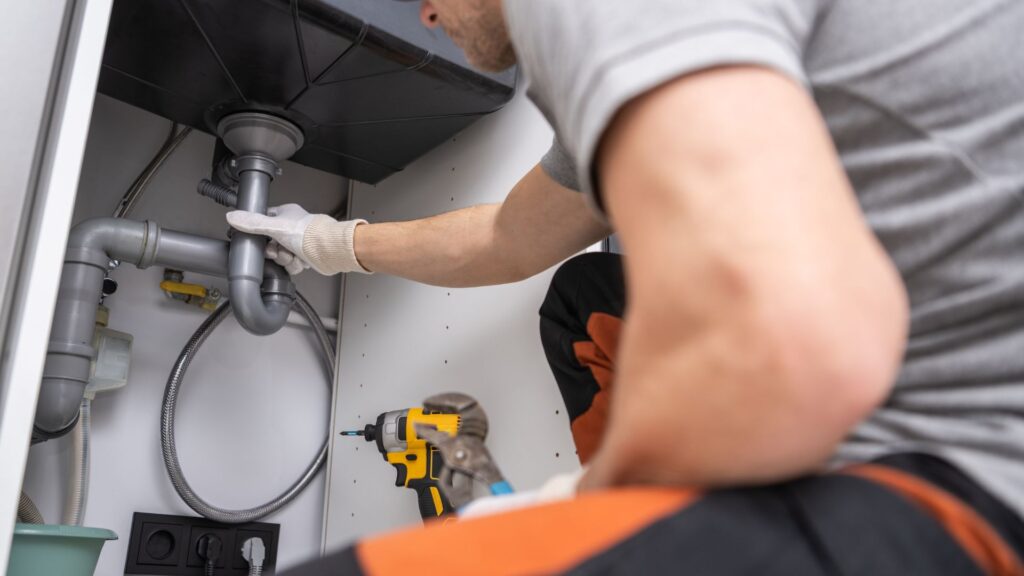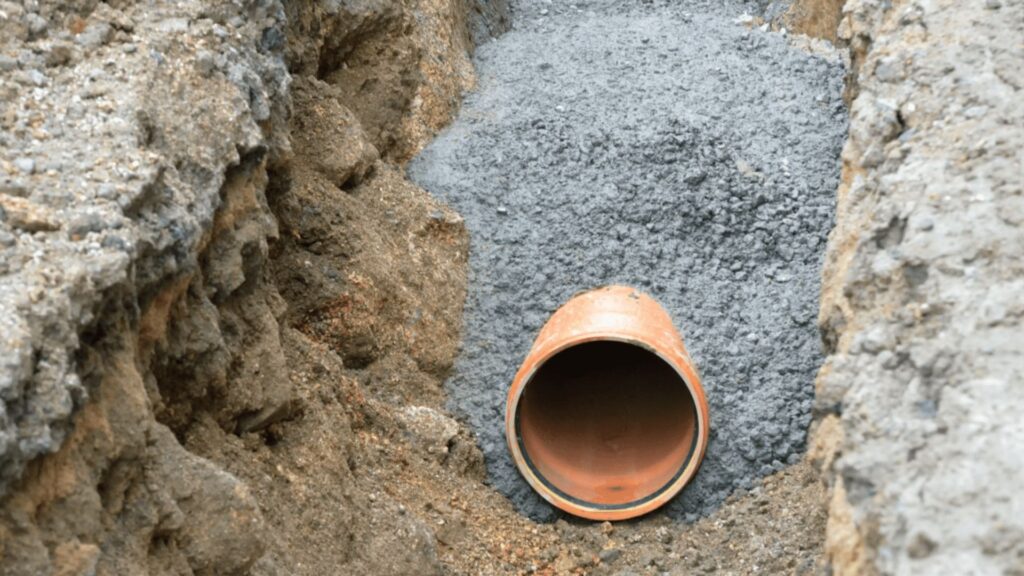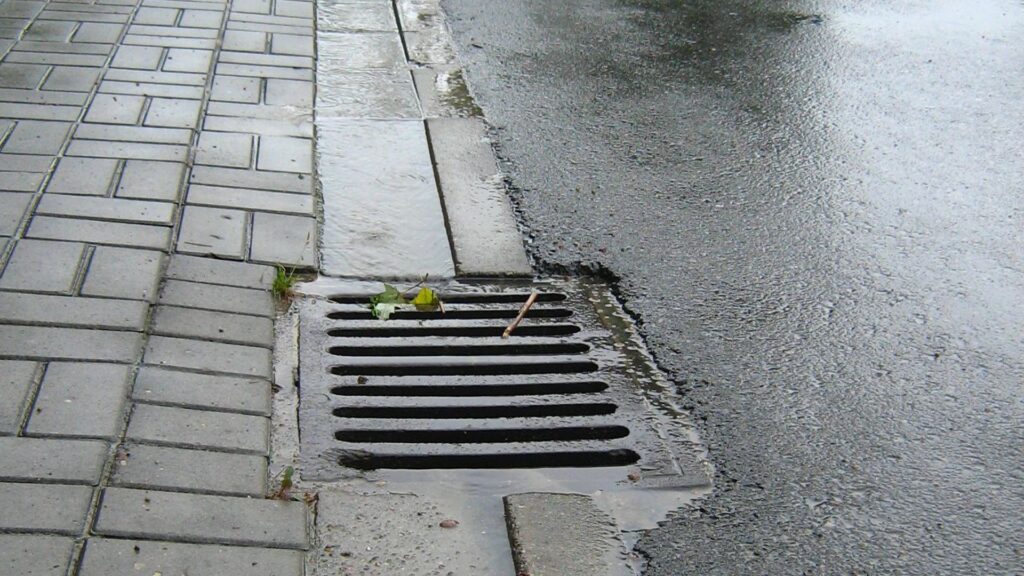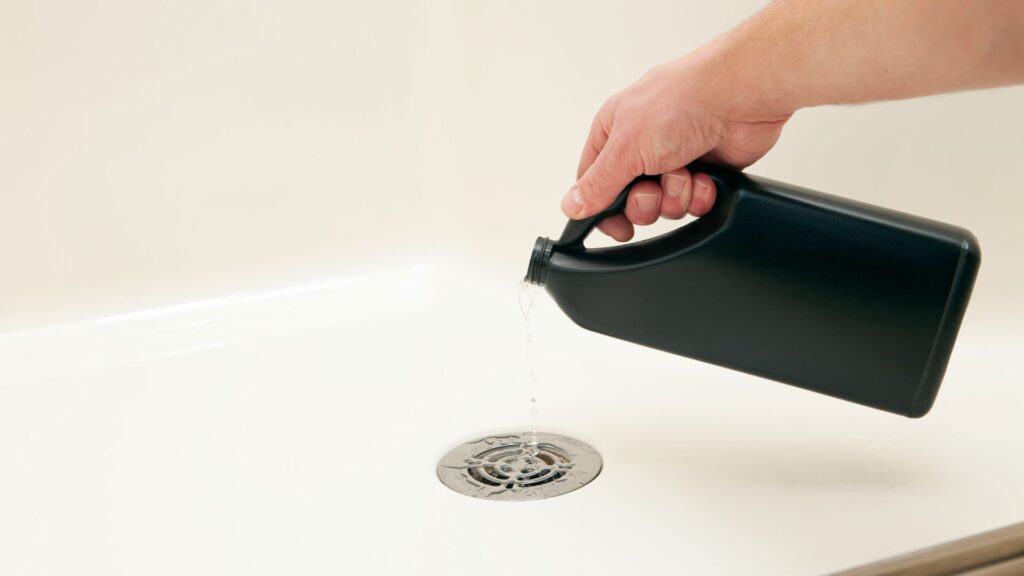Welcome to our comprehensive guide on understanding the critical difference between sewage and sewerage. While these terms are often used interchangeably, they refer to distinct concepts crucial for effective water management. Sewage, the wastewater from our homes, businesses, and industries, contains organic waste, chemicals, and other pollutants. On the other hand, sewerage refers to the complex infrastructure that collects, transports, and treats this wastewater. Understanding this distinction is vital for homeowners, students, and professionals alike, as it impacts everything from public health and environmental protection to local infrastructure and economic efficiency. In this article, we will explore these differences in detail, providing you with the knowledge to appreciate the essential roles both sewage and sewerage play in our daily lives.
Sewage refers to the wastewater generated from homes, businesses, and industries, which includes organic waste, chemicals, and other pollutants. Sewerage, on the other hand, is the system of pipes, pumps, and treatment facilities designed to collect, transport, and treat this wastewater. Understanding this distinction is crucial for effective water management and environmental protection.
- Understanding Sewage
- Understanding Sewerage
- Key Differences Between Sewage And Sewerage
- The Role Of Sewerage In Managing Sewage
- Common Misconceptions And Clarifications
- Importance Of Proper Sewage And Sewerage Management
- Case Studies And Real-World Applications
- Future Trends In Sewage And Sewerage Management
- FAQs: About What Is The Difference Between Sewage And Sewerage
- Conclusion
- Find A Professional Drainlaying Company Near You!
Understanding Sewage
Sewage is essentially the wastewater generated from various activities within homes, businesses, and industrial facilities. This term encompasses a broad range of waste, including anything that goes down the drain or gets flushed away. Essentially, sewage consists of water contaminated by human, household, and industrial waste.
Components
The composition of sewage is quite diverse. Primarily, it includes organic waste such as food scraps, human waste, and other biodegradable materials. Besides organic matter, sewage also contains inorganic substances like detergents, chemicals from cleaning products, and even small solid particles like sand and grit. In industrial settings, sewage can be significantly more complex, including a variety of chemicals and potentially hazardous substances. The mix of these components creates a challenging scenario for treatment and disposal.
Sources
Sewage originates from multiple sources, all interconnected within our daily lives. The most obvious source is toilets, where human waste is flushed away. However, sinks and showers also contribute significantly, carrying away soap, hair, food particles, and various cleaning agents. In kitchens, the waste from washing dishes and disposing of food scraps adds to the sewage system. Industrial facilities contribute their own share, introducing chemicals, oils, and other industrial byproducts into the sewage network. Each of these sources combines to form the complex mixture we need to manage effectively.
Impact on Environment
The environmental impact of untreated sewage is profound and far-reaching. When sewage is not properly treated, it can pollute rivers, lakes, and oceans, leading to severe consequences for aquatic ecosystems. The high nutrient content in sewage, particularly nitrogen and phosphorus, can cause algal blooms. These blooms deplete oxygen in the water, creating “dead zones” where aquatic life cannot survive. Additionally, untreated sewage can introduce harmful pathogens and chemicals into the environment, posing health risks to humans and animals alike. Contaminated water sources can spread diseases and disrupt local ecosystems, highlighting the critical importance of effective sewage treatment and management practices.
By ensuring sewage is adequately treated before being released back into the environment, we can mitigate these adverse effects and promote a healthier, more sustainable ecosystem. This process involves removing solids, treating organic matter, and neutralizing harmful chemicals, thus ensuring that the water we return to nature is as clean and safe as possible.

Understanding Sewerage
Sewerage refers to the complex network of pipes, pumps, and treatment facilities that transport sewage from homes and businesses to treatment plants. Unlike sewage, which is the waste itself, sewerage is the infrastructure that manages and processes this waste.
Components
The sewerage system comprises several key components:
- Pipes: These are the main conduits that carry wastewater from individual buildings to larger sewer lines. They vary in size and material, depending on their location and the volume of sewage they need to handle.
- Pumps: In areas where gravity alone cannot move the wastewater, pumps are used to push it through the pipes. This is especially important in low-lying areas or where the sewage needs to be transported uphill.
- Treatment Facilities: These plants are where the sewage is treated to remove contaminants before the water is safely released back into the environment. Treatment processes include physical, chemical, and biological methods to ensure that the effluent meets environmental standards.
System Functionality
The sewerage system works by transporting sewage through a series of pipes and pumps. Here’s a simplified breakdown of the process:
1. Collection: Wastewater is collected from homes, businesses, and industries through small pipes connected to sinks, toilets, and drains.
2. Transportation: This wastewater flows into larger sewer mains, using gravity or pump stations when necessary.
3. Treatment: Upon reaching a treatment plant, the sewage undergoes various stages of purification. Solids are removed, organic matter is broken down, and harmful pathogens are neutralized.
4. Discharge: The treated water, now safe for release, is discharged into local waterways, and oceans, or reused for irrigation and industrial processes.
Maintenance and Infrastructure
Maintaining a well-functioning sewerage system is critical for public health and environmental safety. Regular inspections, cleaning, and repairs prevent blockages and overflows that can lead to health hazards and environmental pollution. Additionally, upgrading infrastructure to handle growing populations and changing environmental conditions ensures that sewerage systems remain efficient and reliable.
Investing in sewerage infrastructure not only protects public health but also promotes sustainable development. Advanced treatment technologies and better materials for pipes and pumps improve the longevity and efficiency of these systems. Public awareness and proper waste disposal practices also play a significant role in maintaining the integrity of sewerage systems.
In summary, understanding sewerage involves recognizing its essential role in managing wastewater and its components, such as pipes, pumps, and treatment facilities. The functionality and maintenance of these systems are crucial for ensuring public health and environmental safety. By investing in and maintaining our sewerage infrastructure, we can secure a cleaner, healthier future for all.

Key Differences Between Sewage And Sewerage
Understanding the distinction between sewage and sewerage is crucial for anyone interested in environmental science, urban planning, or public health. Though these terms are often used interchangeably, they have specific meanings that set them apart. Let’s delve into the key differences between sewage and sewerage to gain a clearer understanding.
Terminology: Sewage vs. Sewerage
First and foremost, it’s important to clarify the terminology. Sewage refers to the waste matter itself—this includes everything from household wastewater, human excreta, industrial discharge, and stormwater runoff. Essentially, if it’s water that’s been used and needs to be disposed of, it’s classified as sewage.
On the other hand, sewerage refers to the complex network of pipes, pumps, and treatment facilities that transport and treat sewage. Think of sewerage as the infrastructure that supports the removal and treatment of sewage, ensuring it doesn’t pose a health risk to the community or the environment.
Components and Systems: Waste vs. Infrastructure
When we talk about the components of sewage, we’re referring to the waste materials it comprises. This can include organic matter, chemicals, and microorganisms. These components are often harmful and require careful management to prevent contamination of water sources and the spread of diseases.
In contrast, the components of sewerage are all about infrastructure. This includes underground pipes that collect sewage from homes and businesses, pumping stations that move the sewage through the system, and treatment plants where the sewage is processed to remove harmful substances before the treated water is released back into the environment or reused. Sewerage also includes manholes, storm drains, and other elements of the wastewater management system.
Purpose and Function: Removal vs. Management
The purpose and function of sewage and sewerage differ significantly. The primary purpose of sewage is simply the byproduct of human and industrial activities that need to be managed. Its function is largely passive; it is the waste product that must be treated to avoid pollution and health hazards.
Sewerage, however, has an active and critical function. Its purpose is to manage sewage efficiently and safely. This involves transporting the sewage from its source to a treatment facility, where it is cleaned and processed. Sewerage systems are designed to handle large volumes of waste, ensuring that even in times of heavy rain or increased usage, the system can manage the load without overflowing or causing contamination.
Examples: Real-World Illustrations
To further illustrate the differences, let’s consider some real-world examples. Imagine a city after a heavy rainstorm. The rainwater that mixes with street litter and drains into the sewers is part of the sewage. This mixture contains not only rainwater but also debris, oil, and other pollutants washed off the streets.
The network of drains and pipes that collect this rainwater and transport it to a treatment plant is the sewerage system. This infrastructure ensures that the rainwater, now contaminated and part of the sewage, is properly treated before it can re-enter natural water bodies.
Another example is a residential home. The water that flows down the kitchen sink, the toilet, and the shower drains all become part of the sewage. The pipes running from the house, leading to the city’s main sewer line, and the treatment facilities that eventually handle this waste, are all part of the sewerage system.
In summary, while sewage is the waste material produced by daily human activities, sewerage is the system designed to manage, transport, and treat this waste. Understanding these distinctions helps in appreciating the complexities of urban planning and environmental protection. Proper management of both sewage and sewerage is essential for maintaining public health and safeguarding our natural water resources.
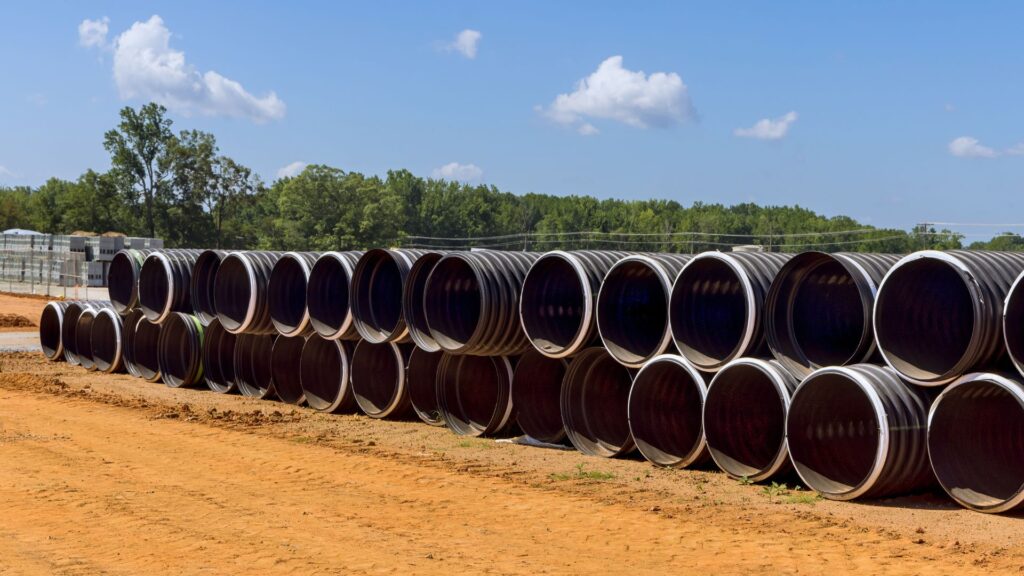
The Role Of Sewerage In Managing Sewage
Sewerage systems play a crucial role in managing sewage, ensuring that waste is efficiently collected, transported, treated, and safely disposed of. Each step in this process is vital for maintaining public health and protecting the environment. Let’s explore each of these roles in detail.
Collection
The first step in managing sewage is its collection. Sewerage systems are designed to collect wastewater from homes, businesses, and industrial sites. This includes water from toilets, sinks, showers, and industrial processes. The collection system comprises an extensive network of pipes and drains that lead to a centralized sewer line. Gravity often aids in the movement of sewage through smaller pipes to larger mains, ensuring efficient collection from various sources.
In urban areas, sewerage systems are typically more sophisticated, with separate systems for stormwater and sanitary sewage. This separation helps prevent overflow during heavy rainfall and ensures that only wastewater is sent to treatment facilities. The design and maintenance of these collection systems are critical to prevent blockages and leaks, which could pose significant health risks and environmental hazards.
Transport
Once collected, the sewage needs to be transported to treatment facilities. This transportation is facilitated by an intricate system of pipes, pumps, and lift stations. The role of these components is to move sewage from lower elevations to higher ones, ensuring a continuous flow toward treatment plants.
In larger cities, the sewerage infrastructure is designed to handle massive volumes of wastewater. The transport process is often assisted by pump stations strategically placed along the network. These stations use powerful pumps to move sewage uphill or across long distances, ensuring it reaches the treatment facilities without interruption. The efficiency of the transport system is crucial to avoid any potential spills or leaks that could contaminate the environment.
Treatment
The treatment of sewage is a critical step in the sewerage management process. Treatment facilities are equipped with advanced technology to remove contaminants from the wastewater. This process typically involves multiple stages:
1. Primary Treatment: This initial stage involves the removal of large solids and sediments through screening and settling. The sewage is passed through screens that capture large debris, and then it moves to settling tanks where heavier particles settle at the bottom.
2. Secondary Treatment: In this stage, biological processes are used to break down organic matter. Aeration tanks introduce oxygen, promoting the growth of beneficial bacteria that consume organic pollutants. The resulting mixture is then allowed to settle, separating the sludge from the treated water.
3. Tertiary Treatment: This advanced stage further purifies the water by removing any remaining contaminants, including nutrients like nitrogen and phosphorus. Various methods, such as filtration, chemical treatment, and UV disinfection, are used to achieve high-quality effluent suitable for discharge or reuse.
Effective treatment processes ensure that the discharged water meets environmental standards, protecting water bodies and ecosystems from pollution.
Disposal
The final stage in the sewerage management process is the disposal of treated sewage. This step involves the safe release or reuse of the treated effluent and the management of the solid byproducts, known as sludge.
1. Effluent Disposal: Treated water is typically discharged into rivers, lakes, or oceans. Before discharge, the effluent undergoes rigorous testing to ensure it meets regulatory standards. In some cases, treated wastewater is reused for agricultural irrigation, industrial processes, or even as potable water after additional treatment.
2. Sludge Management: The solid waste or sludge collected during the treatment process is further processed to reduce its volume and make it safe for disposal or reuse. Methods such as anaerobic digestion, composting, and incineration are employed to manage sludge. The resulting byproducts can be used as fertilizers or for energy production, contributing to resource recovery and sustainability.
In conclusion, sewerage systems play an indispensable role in managing sewage through efficient collection, transportation, treatment, and disposal processes. These systems not only protect public health and the environment but also contribute to the sustainable use of resources. Proper maintenance and continuous improvements in sewerage infrastructure are essential to handle increasing wastewater volumes and meet stringent environmental standards.

Common Misconceptions And Clarifications
Misuse of Terms
One of the most common misconceptions revolves around the misuse of the terms “sewage” and “sewerage.” These terms are often used interchangeably, leading to confusion and misunderstanding.
- Sewage: This term specifically refers to the waste matter, both liquid and solid, that is transported through the sewer system. It includes everything from household wastewater (like water from sinks, showers, and toilets) to industrial waste. When you flush your toilet or drain your sink, the waste produced is called sewage.
- Sewerage: On the other hand, sewerage refers to the infrastructure and systems that carry sewage from its source to a treatment facility. This includes the network of pipes, pumps, and treatment plants designed to handle and treat sewage. Essentially, sewerage is the system that manages sewage.
Understanding the distinct definitions of these terms is crucial for proper communication and comprehension in discussions related to waste management and environmental health. Misusing these terms can lead to misconceptions about the processes involved in waste management and the responsibilities of municipal services.
Clarifying Confusion
To further clarify and avoid any confusion, let’s break down the terms into simple, digestible explanations:
- Sewage: Think of sewage as the “what” – the waste itself. This includes everything that goes down the drains and toilets in your home or business. It’s the dirty water and waste that needs to be treated to prevent pollution and protect public health.
- Sewerage: Think of sewerage as the “how” – the method and infrastructure used to transport and treat sewage. This system ensures that sewage is safely carried away from residential and commercial areas to treatment plants where it can be processed and cleaned.
By understanding these clear distinctions, you can communicate more effectively about waste management issues and solutions. For instance, when discussing a sewage spill, you’re referring to the actual waste material that has leaked. When discussing sewerage problems, you’re talking about issues within the system of pipes and pumps that transport that waste.
Additionally, recognizing these differences can help in understanding news reports, policy discussions, and educational materials about environmental protection and public health. Accurate use of these terms ensures that everyone is on the same page and that appropriate actions can be taken to address waste management challenges.
In summary, while sewage and sewerage are related, they are not the same. Sewage is the waste, and sewerage is the system that deals with this waste. Proper use of these terms is essential for clear and effective communication in all matters concerning waste management.

Importance Of Proper Sewage And Sewerage Management
Proper sewage and sewerage management is crucial for various aspects of society, impacting public health, the environment, and the economy. Let’s delve into each of these areas to understand why efficient management is essential.
Public Health
One of the most significant reasons for effective sewage and sewerage management is the protection of public health. When waste is not correctly managed, it can lead to severe health issues. Pathogens and harmful bacteria in untreated sewage can contaminate drinking water sources, leading to waterborne diseases such as cholera, dysentery, and typhoid. By ensuring that sewage is properly treated and disposed of, communities can prevent these diseases and maintain a healthier population.
Moreover, proper sewage systems help in controlling pests like mosquitoes and rodents, which are known carriers of diseases. For instance, standing water from poorly managed sewage can become breeding grounds for mosquitoes, increasing the risk of malaria and dengue fever. By maintaining an efficient sewage system, the spread of such vector-borne diseases can be significantly reduced.
Environmental Protection
Sewage and sewerage management also play a vital role in protecting the environment. Untreated sewage can lead to the pollution of rivers, lakes, and oceans, severely affecting aquatic life and ecosystems. Chemicals and waste products can deplete oxygen levels in water bodies, leading to dead zones where marine life cannot survive.
Effective sewage treatment processes ensure that harmful substances are removed before the wastewater is released back into the environment. This not only helps in preserving biodiversity but also maintains the natural balance of ecosystems. Additionally, proper management prevents soil contamination, which can affect agricultural productivity and food safety.
Economic Impact
The economic benefits of proper sewage and sewerage management are substantial. Firstly, it reduces healthcare costs. By preventing diseases, communities spend less on medical treatments and can allocate resources to other essential services. Healthy populations are also more productive, contributing positively to the economy.
Secondly, well-managed sewage systems can attract businesses and investors. Companies are more likely to set up operations in areas with reliable infrastructure, including efficient waste management systems. This can lead to job creation and economic growth in the region.
Furthermore, tourism can be positively impacted by clean and well-maintained environments. Tourists are more likely to visit and spend money in areas known for their cleanliness and environmental consciousness. This influx of tourism revenue can boost local economies significantly.
Lastly, modern sewage treatment plants can also be a source of renewable energy. Biogas produced during the treatment process can be used to generate electricity, providing a sustainable energy source and reducing reliance on fossil fuels. This not only supports the environment but also contributes to energy security and economic resilience.
In conclusion, the importance of proper sewage and sewerage management cannot be overstated. It is integral to maintaining public health, protecting the environment, and driving economic growth. Investing in efficient sewage systems is an investment in a healthier, cleaner, and more prosperous future for communities worldwide. By understanding and prioritizing these aspects, we can ensure sustainable development and improved quality of life for all.
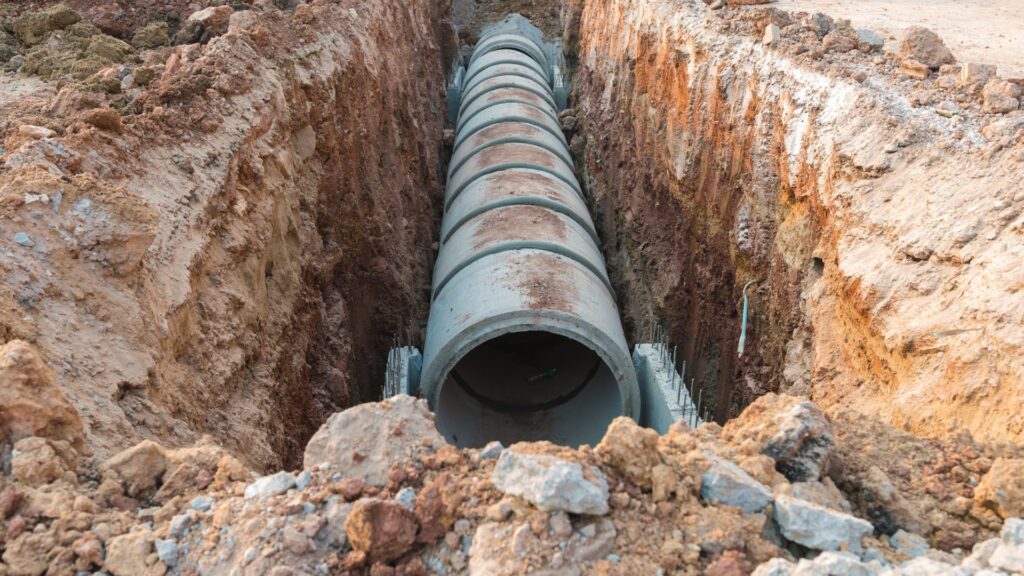
Case Studies And Real-World Applications
Case Study 1: Effective Sewerage System in Tokyo, Japan
Tokyo, Japan, is renowned for its advanced and efficient sewerage system. With a population exceeding 37 million in the metropolitan area, the city has faced significant challenges in managing wastewater. However, through meticulous planning and technological innovation, Tokyo has developed a sewerage system that serves as a model for other cities worldwide.
Background: Tokyo’s sewerage system began in the early 20th century. Today, it comprises an extensive network of underground tunnels and treatment plants that efficiently handle the city’s wastewater. The system’s key components include:
- Advanced Treatment Plants: Tokyo employs cutting-edge wastewater treatment plants that utilize biological and chemical processes to purify water. These plants remove contaminants, ensuring that the discharged water is safe for the environment.
- Integrated Stormwater Management: The city has integrated its sewerage system with stormwater management to prevent flooding during heavy rains. This integration involves massive underground reservoirs that temporarily store excess rainwater.
- Regular Maintenance and Upgrades: Tokyo invests heavily in the regular maintenance and upgrading of its sewerage infrastructure. This proactive approach helps prevent system failures and ensures continuous, efficient operation.
Outcomes: Tokyo’s sewerage system has significantly reduced water pollution in surrounding rivers and Tokyo Bay. It has also played a crucial role in preventing flood-related disasters, protecting both the environment and public health.
Case Study 2: Consequences of Poor Sewage Management in Lagos, Nigeria
In contrast, Lagos, Nigeria, presents a stark example of the consequences of inadequate sewage management. As one of the fastest-growing cities in the world, Lagos faces severe challenges in managing its wastewater due to rapid urbanization and a lack of infrastructure investment.
Background: Lagos’s sewage management system is underdeveloped, with much of the city’s wastewater being discharged untreated into the environment. Key issues include:
- Limited Infrastructure: The city’s sewerage infrastructure is insufficient to handle the growing population. Many areas lack access to proper sewage systems, relying instead on septic tanks and pit latrines.
- Environmental Pollution: Untreated sewage is often discharged into Lagos Lagoon and other water bodies, leading to severe water pollution. This pollution negatively impacts marine life and contributes to the spread of waterborne diseases.
- Public Health Crisis: Poor sewage management has resulted in frequent outbreaks of diseases such as cholera and typhoid. The lack of sanitation infrastructure poses significant health risks to residents, particularly in densely populated informal settlements.
Outcomes: The environmental degradation and public health issues caused by inadequate sewage management in Lagos highlight the urgent need for investment in infrastructure and sustainable management practices.
Lessons Learned
These case studies offer valuable lessons on the importance of effective sewage management:
1. Investment in Infrastructure: Effective sewage management requires substantial investment in infrastructure. Cities must prioritize the construction and maintenance of advanced treatment plants and sewer networks to handle increasing wastewater volumes.
2. Integrated Approaches: Integrating sewerage systems with stormwater management can mitigate flooding risks and enhance overall system efficiency. This approach is crucial for cities facing heavy rainfall and climate change challenges.
3. Proactive Maintenance: Regular maintenance and upgrades are essential to prevent system failures and ensure continuous operation. Proactive management can save costs and protect public health in the long term.
4. Environmental and Public Health Benefits: Proper sewage management significantly reduces environmental pollution and improves public health outcomes. Clean water bodies and reduced disease outbreaks contribute to a better quality of life for residents.
5. Tailored Solutions: Cities must develop sewage management strategies tailored to their unique challenges and resources. What works for Tokyo may not be directly applicable to Lagos, but the underlying principles of investment, integration, and maintenance remain universally relevant.
By learning from these real-world examples, cities worldwide can develop effective sewage management systems that protect both the environment and public health.

Future Trends In Sewage And Sewerage Management
Technological Advancements
The future of sewage and sewerage management is set to be revolutionized by technological advancements. One of the most significant developments is the implementation of smart sewer systems. These systems use sensors and IoT (Internet of Things) devices to monitor and manage sewage flow in real-time. By providing immediate feedback, these smart systems can detect leaks, blockages, and overflows, enabling quick responses and reducing the risk of environmental contamination.
Another promising technology is the use of advanced treatment processes such as membrane bioreactors (MBRs) and anaerobic digestion. MBRs combine biological treatment with membrane filtration, resulting in higher-quality effluent that can be safely discharged or reused. Anaerobic digestion, on the other hand, not only treats sewage but also produces biogas, which can be used as a renewable energy source, thus reducing the carbon footprint of sewage treatment facilities.
Sustainability
Sustainability in sewage and sewerage systems is becoming increasingly important as the world grapples with climate change and resource scarcity. One key aspect of sustainability is the implementation of water reuse practices. Treated wastewater can be repurposed for agricultural irrigation, industrial processes, and even potable water supply in some regions. This reduces the demand for freshwater resources and promotes a circular economy.
Green infrastructure, such as constructed wetlands and green roofs, is also gaining traction. These systems use natural processes to treat and manage stormwater and sewage, providing a habitat for wildlife and enhancing urban green spaces. Additionally, they help mitigate the urban heat island effect and improve air quality, contributing to overall environmental sustainability.
Global Initiatives
Several global initiatives are underway to improve sewage and sewerage infrastructure, particularly in developing countries where access to adequate sanitation remains a challenge. The United Nations’ Sustainable Development Goal 6 aims to ensure the availability and sustainable management of water and sanitation for all by 2030. This includes expanding sewage treatment infrastructure, improving sanitation facilities, and promoting hygiene practices.
Organizations like the World Bank and the Bill & Melinda Gates Foundation are investing in innovative sanitation solutions. For instance, the Reinvented Toilet Challenge by the Gates Foundation encourages the development of self-contained, off-grid sanitation systems that treat human waste on-site without the need for sewer connections. These solutions are particularly beneficial in remote and underserved areas.
In conclusion, the future of sewage and sewerage management is being shaped by technological advancements, sustainable practices, and global initiatives. By embracing these trends, we can create more efficient, environmentally friendly, and accessible sewage systems that meet the needs of a growing global population.

FAQs: About What Is The Difference Between Sewage And Sewerage
Conclusion
In conclusion, understanding the difference between sewage and sewerage is essential for proper waste management and environmental protection. Throughout this article, we’ve explored the definitions of both terms, the processes involved in treating and transporting waste, and the critical role that sewerage systems play in maintaining public health. Properly managing sewage is crucial to prevent contamination and ensure clean water supplies. Being informed about these systems allows individuals to appreciate their importance and contribute to their maintenance. Therefore, we encourage you to be mindful of your water usage and actively support local infrastructure projects that enhance our sewage and sewerage systems. By doing so, we can collectively ensure a healthier, cleaner environment for future generations.
Find A Professional Drainlaying Company Near You!
- Drain Layers Auckland
- Drain Layers Hastings
- Drain Layers Hawkes Bay
- Drain Layers Kapiti Coast
- Drain Layers Lower Hutt
- Drain Layers Napier
- Drain Layers Porirua
- Drain Layers Rotorua
- Drain Layers Tauranga
- Drain Layers Upper Hutt
- Drain Layers Wellington
- Drain Repairs Auckland
- Drain Repairs Wellington
- Drain Unblockers Auckland
- Drain Unblockers East Auckland
- Drain Unblockers North Shore
- Drain Unblockers South Auckland
- Drain Unblockers West Auckland
- Water Leak Detection Auckland
About the Author:
Mike Veail is a recognized digital marketing expert with over 6 years of experience in helping tradespeople and small businesses thrive online. A former quantity surveyor, Mike combines deep industry knowledge with hands-on expertise in SEO and Google Ads. His marketing strategies are tailored to the specific needs of the trades sector, helping businesses increase visibility and generate more leads through proven, ethical methods.
Mike has successfully partnered with numerous companies, establishing a track record of delivering measurable results. His work has been featured across various platforms that showcase his expertise in lead generation and online marketing for the trades sector.
Learn more about Mike's experience and services at https://theleadguy.online or follow him on social media:

